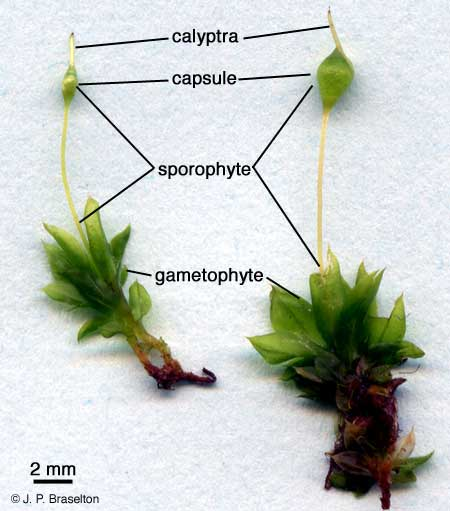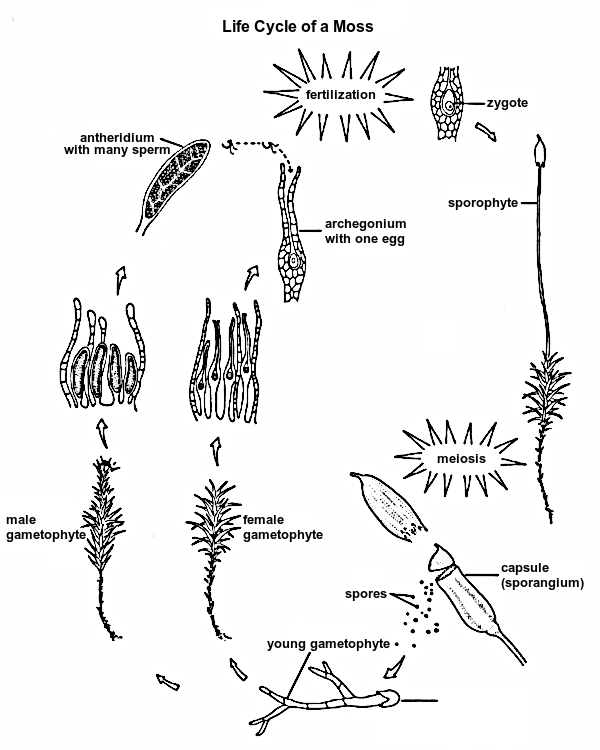
The bryophytes are plants that do not have vascular tissues (xylem and phloem). Bryophytes are small plants, generally only several centimeters in height. Also, they usually grow only in moist areas. The major groups within the bryophytes are the mosses, liverworts, and hornworts. Since mosses are the most common bryophytes, and you probably already have come in contact with mosses, we use mosses as our example for bryophytes in general.
The dominant phase of the life cycle is the gametophyte—viz., the part of the life cycle we see the most is the gametophyte. The gametophyte is haploid (i.e., has the n number of chromosomes) and produces the gametes. In the case of most mosses, one individual gametophyte will produce only male gametes, sperm. Another individual will produce only female gametes, eggs. Each female moss gametophyte will have a structure, the archegonium, in which an egg is produced. Each male moss gametophyte will have some antheridia, the structures in which sperm are produced. Archegonia and antheridia collectively are termed gametangia. The female gametangium is the archegonium; the male gametangium is the antheridium.
Fine, greenish or light reddish-brown, filamentous structures, approximately 1-5 centimeters in length, stick out of some of the gametophytes. They are the sporophytes growing out of the gametophytes.
Swellings at the tips of the sporophytes are sporangia, the capsules. A cap covering the capsule is the remnant of the archegonium and known as the calyptra. The sporophytes of mosses are less noticeable than the gametophytes. Also, they are dependent on the gametophyte for much of their nutrition.

Meiosis in the sporangium produces spores, the first cells in the haploid (n) phase of the life cycle. Spores germinate and develop into gametophytes. Some gametophytes have antheridia that produce sperm; other gametophytes have archegonia that produce eggs. Sperm swim from the antheridium of one gametophyte to the archegonium of another gametophyte and fertilize the egg. The fertilized egg is the zygote, the first cell in the diploid (2n) phase of the life cycle. The zygote divides and after a series of cell divisions develops into the mature sporophyte which remains attached to the gametophyte. A sporangium (capsule) develops at the tip of the sporophyte, meiosis occurs and spores are produced.
Note that there is only one type of spore produced in the sporangium. The term for this is homospory. Mosses, therefore, are homosporous.
